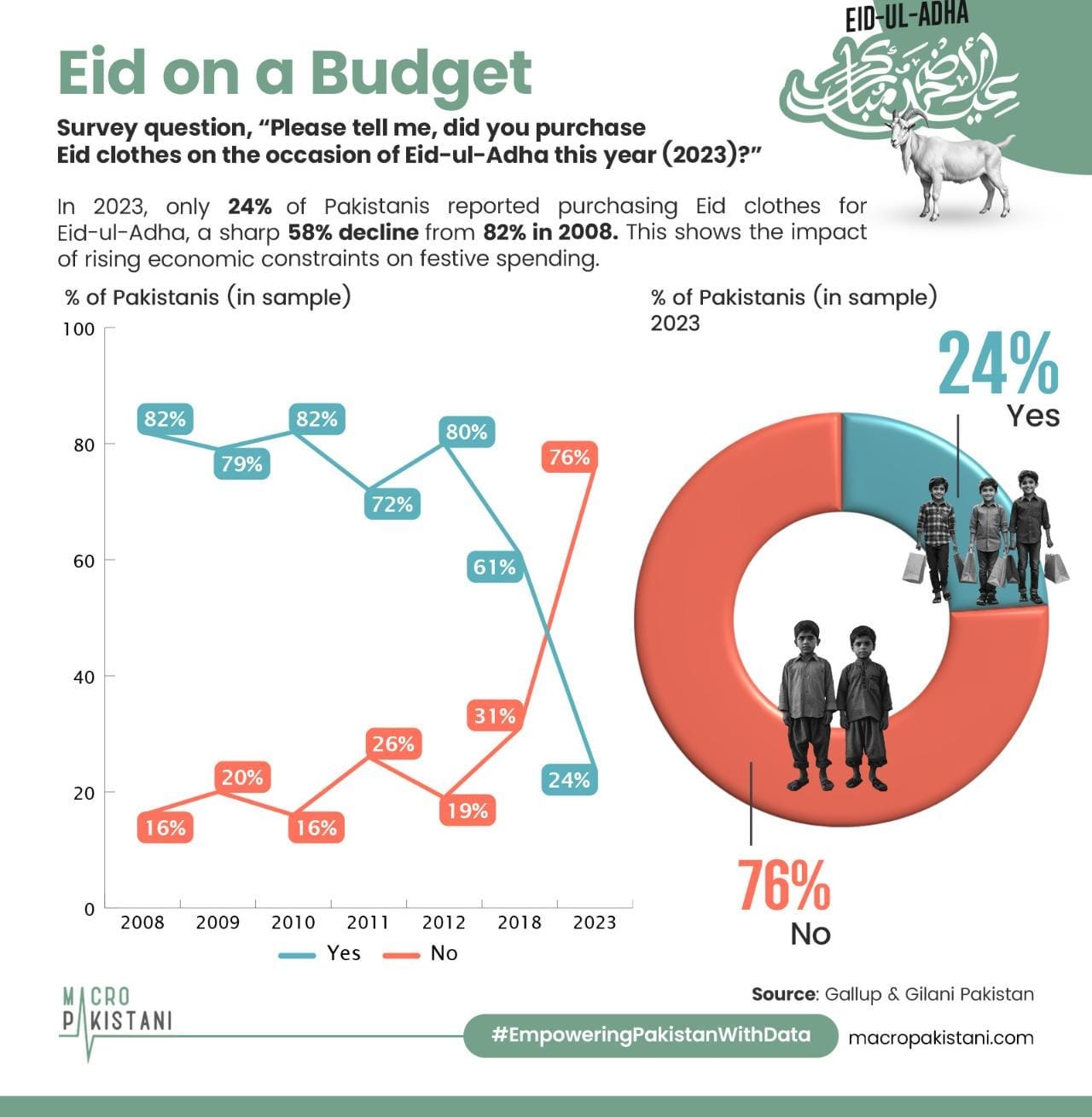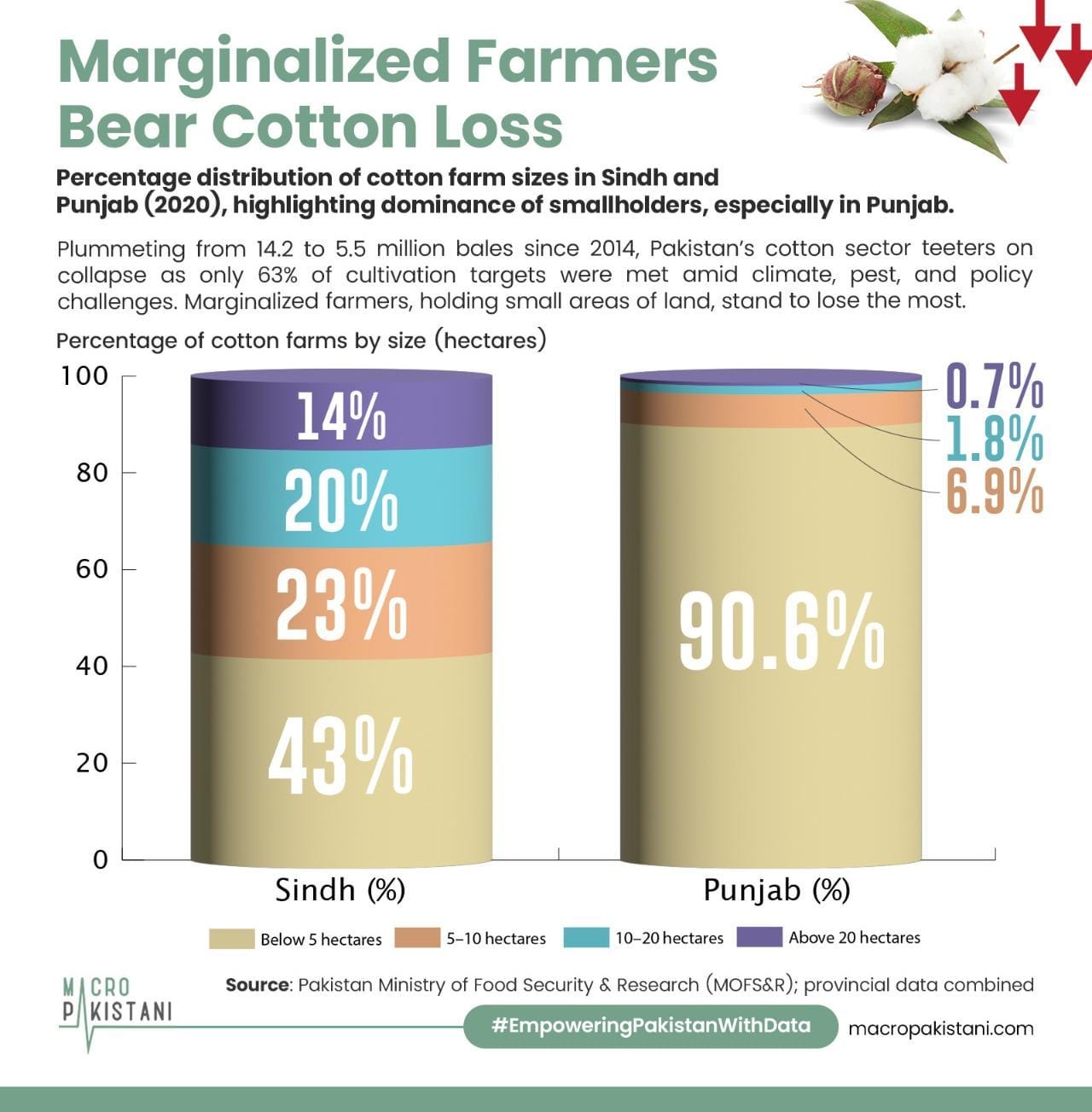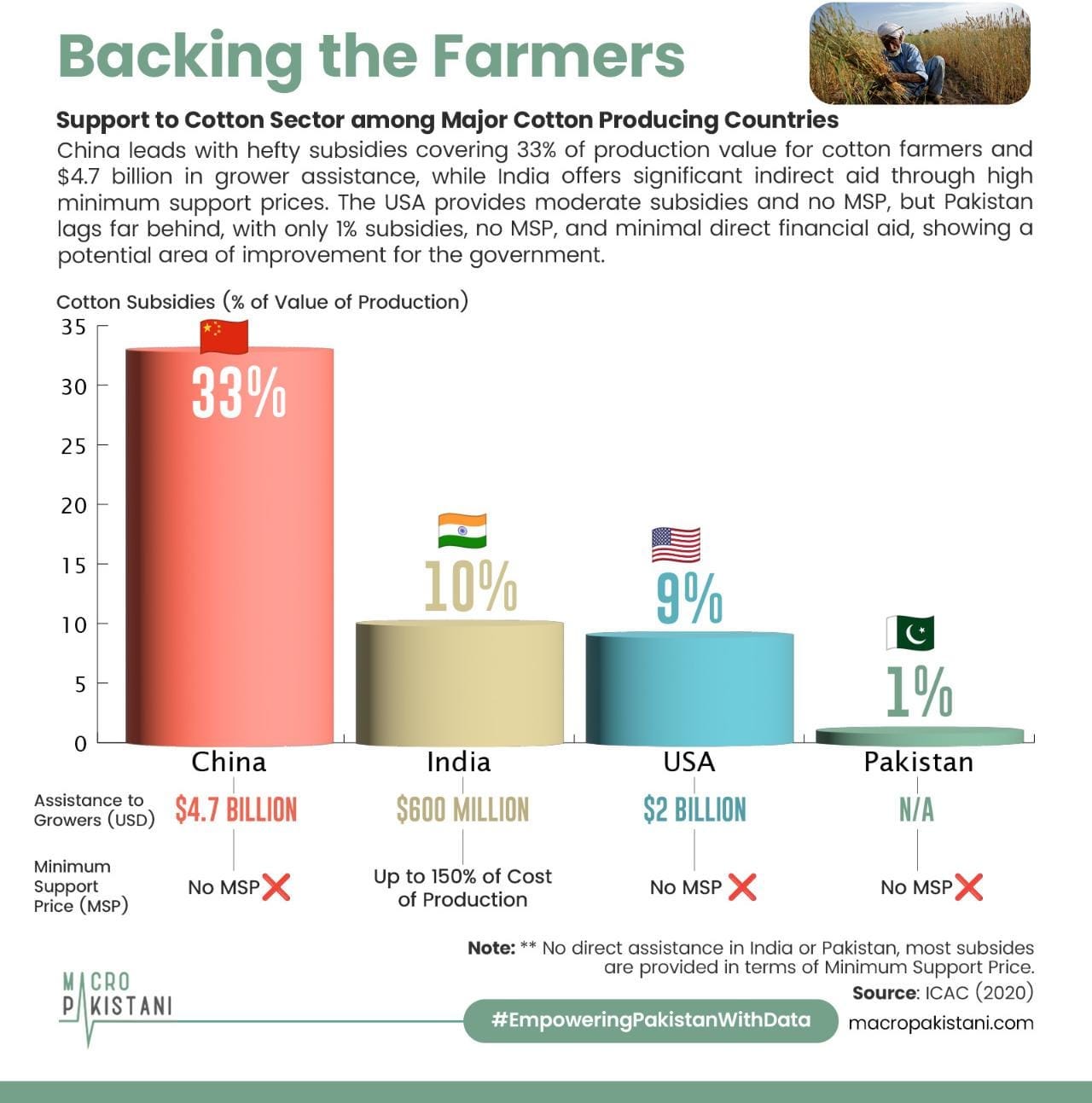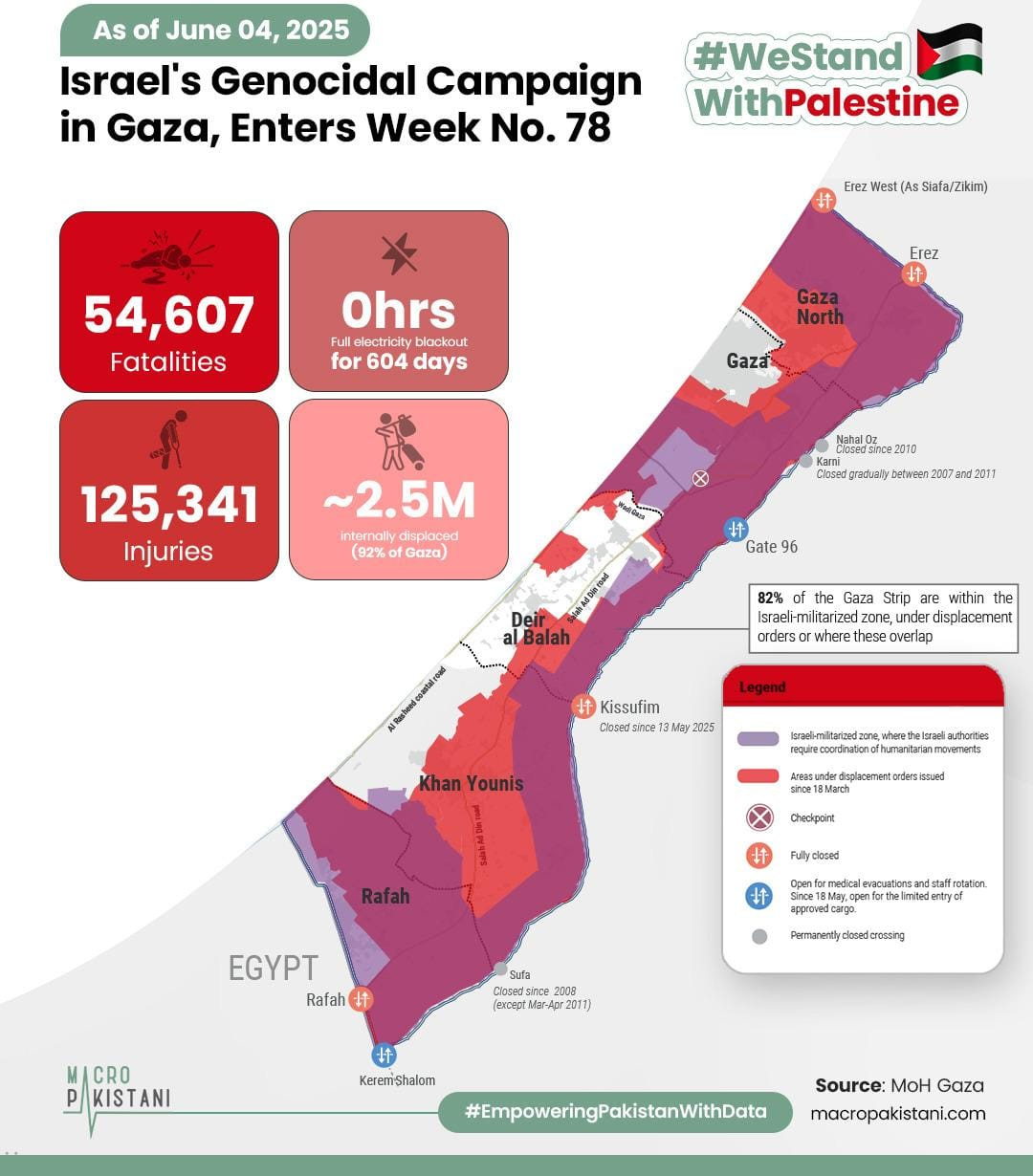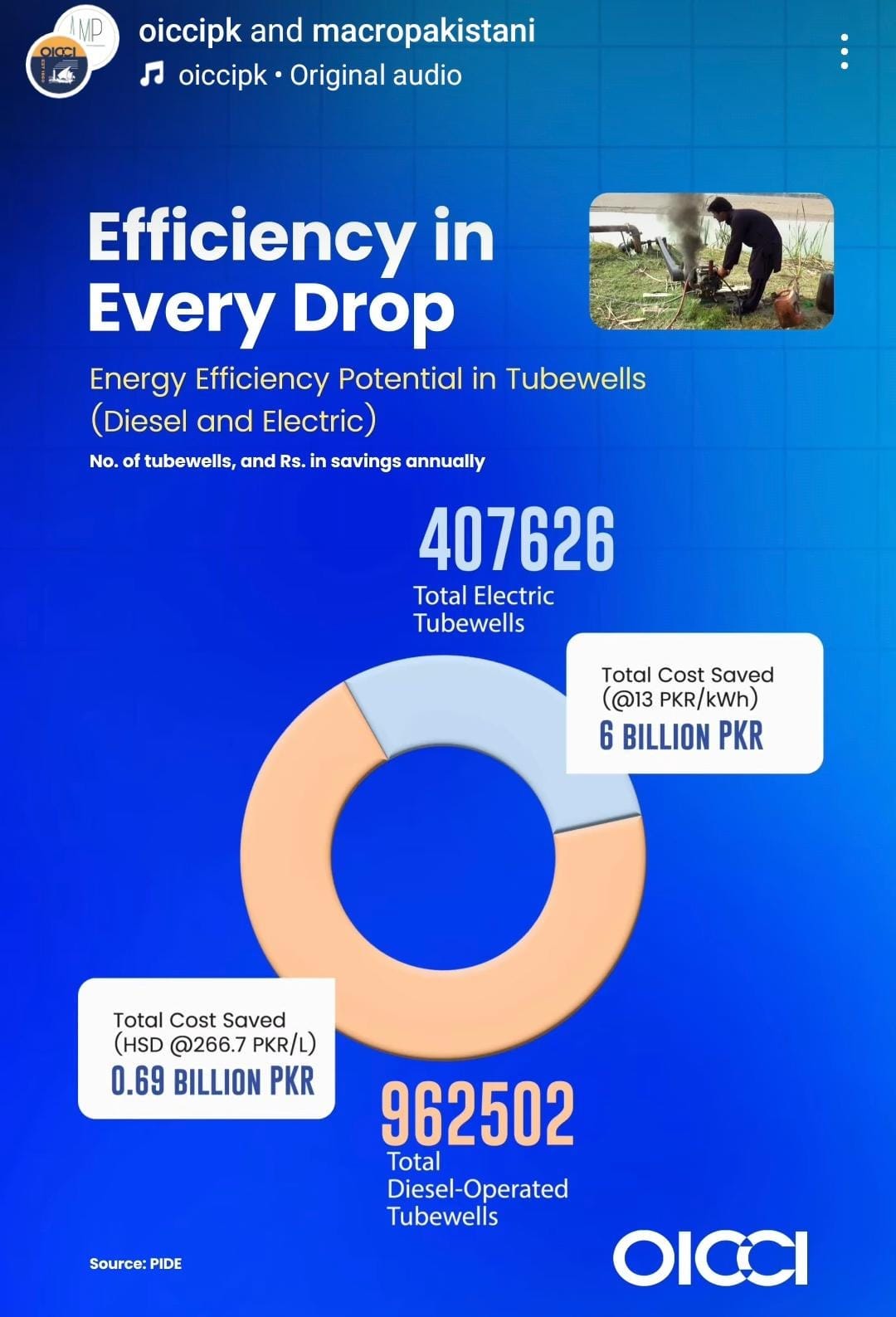Pakistan’s Fraying Thread of Survival
Plummeting from 14.2 to 5.5 million bales since 2014, Pakistan’s cotton sector teeters on collapse as only 63% of cultivation targets were met amid climate, pest, and policy challenges.

Pakistan’s cotton sector is facing a severe crisis, with the 2024 season marked by a dramatic decline in cultivation and production. Only 63% of the national cultivation target was achieved, with both Punjab and Sindh reporting significant reductions compared to previous years. A combination of climate change, water scarcity, pest infestations, lack of technological advancement, and shifting interest towards more lucrative crops has severely impacted yields, driving production down from 14.2 million bales in 2014-15 to just 5.5 million bales today. This shortfall has deepened the economic strain on smallholding farmers, many of whom are shifting to alternative crops due to declining profits. The situation threatens the broader textile industry and national economy. Pakistan’s cotton crisis is not just an agricultural or economic failure; it is a collapse of rural livelihoods and social stability. Once the pride of the country’s economy, cotton now faces a 30% drop in yield, with only three ginning factories operational in Punjab. For small farmers, the decline is devastating. Only 8% of surveyed farmers, in an ILO study, find their income sufficient to meet basic needs, while 88% rely on alternate income sources, and 32% are forced to take loans, often from informal lenders such as middlemen, leading to exploitative dependencies.
Despite the government’s recent proposal to adjust taxes on cotton and imports, these industry-driven measures fail to address structural issues: poor seed quality, lack of finances, lack of mechanization, and minimal government procurement. In 2023, cotton showed signs of recovery due to global shortages and a state-promised support price of Rs 8,500 per maund, yet bureaucratic delays and inconsistency squandered that chance. Farmers remain unclear on pricing mechanisms, with 98% reporting no guaranteed minimum price. Meanwhile, 70% of workers and 40% of farmers lack formal education, limiting access to information and progress. The shift away from cotton to sugarcane or maize signals not just economic loss, but a broader social unravelling. Without urgent, inclusive reform, cotton’s fall will continue to cause the upheaval of already marginalized lives in rural Pakistan.
To solve Pakistan’s cotton crisis, adopting genetically modified crops like BT cotton is crucial to boost yields by up to 30%, increase food security, and cut production costs by reducing chemical use. With rising local cotton production in China challenging traditional regional leaders, Pakistan must improve productivity and sustainability to stay competitive and protect its agricultural economy.
GRAPHICS
During this sacred occasion of Eid ul Adha please remember all those suffering around the world in your prayers. Gazans are spending their 4th consecutive Eid amid Israel’s brutal genocide.
Irrigation in Pakistan’s agriculture sector, dominated by inefficient diesel and electric-powered tubewells, consumes vast amounts of energy and contributes to over 5 million tonnes of CO₂ emissions annually. Outdated practices, oversized pumps, and high-friction piping result in significant energy losses and high costs, with electricity accounting for 90% of energy use.
Data Visualization & Marketing Partner: Brand Nib
Visit: https://macropakistani.com/advertise/
Grateful for the ever-growing list of collaborators!
About Us: Macro Pakistani is a data-driven research platform that aims to provide a basic understanding of Pakistan’s economy. If you have an interest in contemporary news but are currently overburdened with sensationalism and specialized vocabulary, we are the platform for you.
How are we doing? Please send us any questions, comments or suggestions by replying to this email.


